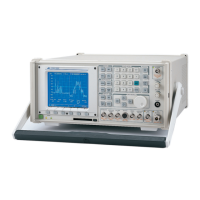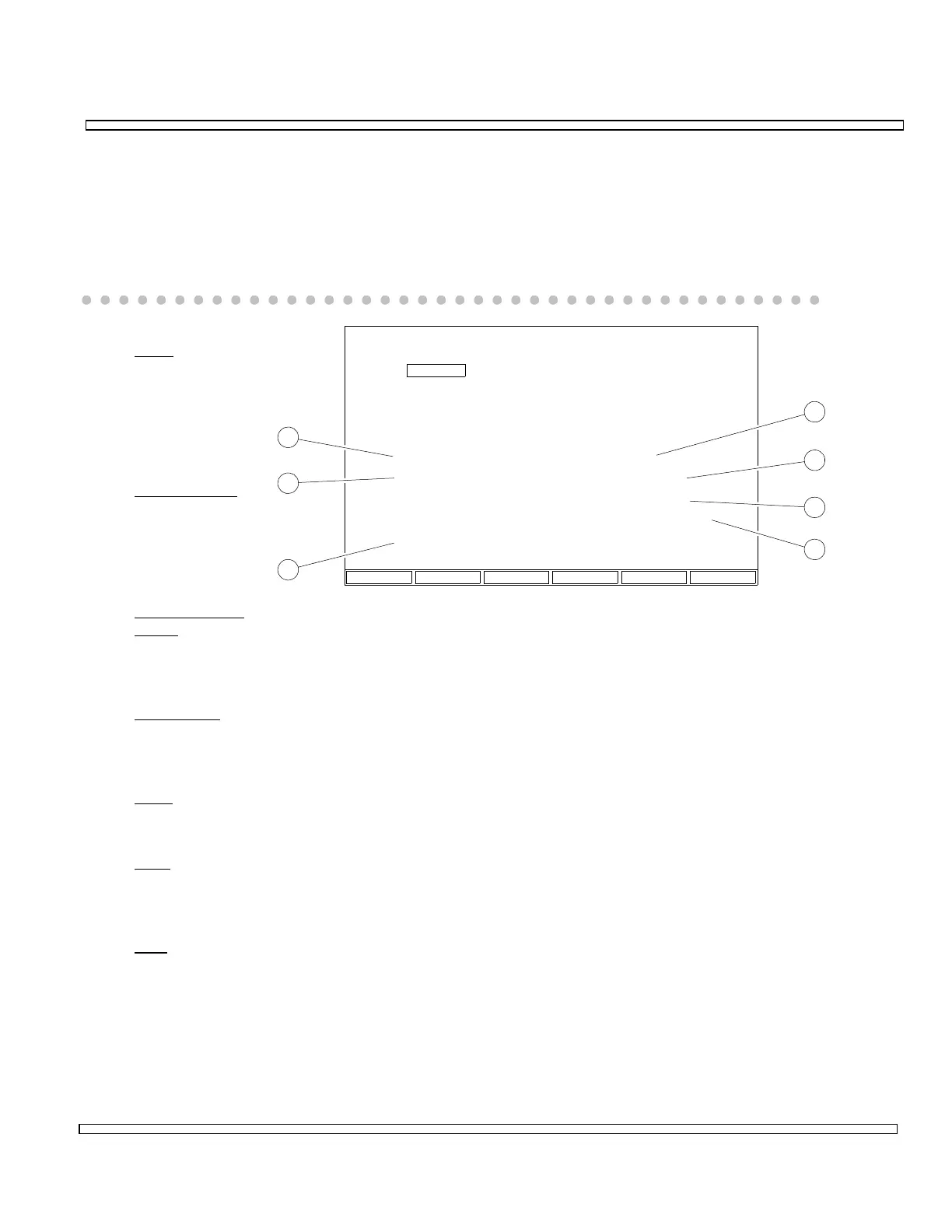6-63
SECTION 6
OPTIONS
6-13-11 REGISTRATION TEST
The Registration Test simulates a Registration order from the Cell Site and tests the
Mobile Phone’s response.
To perform the Registration Test, press F1 REG. After the Registration Tests are
completed, results are displayed.
1. SCM
Displays 4
least
significant
Station Class
Mark bits.
2. Power Class
Displays Power
Class of
Mobile Phone
under test.
3. Transmission
State
Displays Transmission State, Continuous or Discontinuous, of Mobile Phone under
test.
4. Bandwidth
Displays bandwidth of Mobile Phone under test. 20 MHz allows channels 1 to
666. 25 MHz allows channels 1 to 1023.
5. DCC
Displays Digital Color Code last received by Mobile Phone under test.
6. ESN
Displays Electronic Serial Number of Mobile Phone under test in Hexadecimal,
Decimal and Octal.
7. MIN
Displays Mobile Identification Number of Mobile Phone under test.
8717126
RETURN
AMPS Cellular
Manual Test
Registration
Mobile Init
Cell Init
MIN:
ESN:
DCC:
316/522-4981
HEX 8208A4C4
Dec 13000566468
Oct 20202122304
2
SCM: 0100
POWER CLASS 1
DISCONTINUOUS
BANDWIDTH: 20 MHz
1
2
3
4
5
6
7
CELLMOBILEREG

